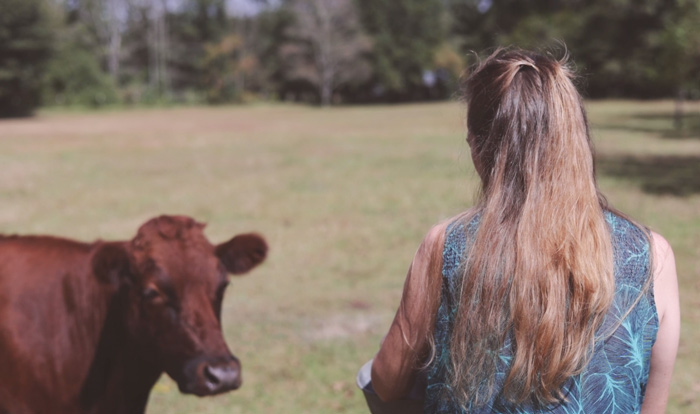Since we didn’t want to till up our ground and hurt the existing grass, I decided to experiment with over-sowing pasture with cool-season forage. Thus far, the results have been very encouraging.
We sowed by hand, then dragged the pasture by hooking up a “drag harrow” to our zero-turn mower, then mowed the grass high so the clippings and shredded leaves would give the new seeds a little cover.
It’s important to do this before a good rain event. I finished sowing and mowing about a half-hour before we got a couple inches of rain. Perfect timing!
It’s also important to plant the right seeds in the right season. As the summer grass is dying down for the winter, we’re switching to cool-season forage plants, over-sowing with a mix of winter peas, winter rye grass, grain rye, oats, red and white clover, Austrian winter peas, turnips and daikons. The existing grass isn’t providing much competition right now as it’s dormant.
Anyhow – check out the video and you can see some results, plus how we’re moving cows from pasture to pasture. You’ll also see how cows are actually helping us seed, by sending seeds through in their manure.
I have a feeling this pasture-building method could also work in the garden, where you simply over-sow a new crop at the right time to take over from a previous season’s plants.


5 comments
Nice job looks awesome! I’ve been playing around with over seeding also, in our small 1 acre pasture for our milk cow. I purchased a cheap Greenworks electric dethatcher to pull up the old dead grass before I seeded. I’m starting to see some results. We got a long way to go to get some good established grasses, but it has turned out to be a very enjoyable process. The old saying is true “when you have cows, you become a grass farmer”.
Nice work! I’m sure they’ll appreciate such succulent forage in an otherwise dormant setting. I hand broadcast annual ryegrass into our pastures and patchy lawn for winter sheep forage, and they love it. My biggest challenge is getting enough of the seed past my free ranging chickens to germinate and grow. They also enjoy fodder that I cut and throw their way. I’ve become fascinated with grazing and pasture management, and I’m beginning to see just how amazing ruminant livestock can be. They take plants that we can’t digest, eat them, and produce some of the most nutrient-dense food available in meat and dairy. It’s a pretty great trade! I recently came across a book titled, “The Independent Farmstead” by Shawn and Beth Dougherty. I think you would enjoy what they have to say.
Sorry for the unrelated and late post, but I enjoyed your recent cane syrup videos. I’m taking my cane to a friend’s place tomorrow to make a batch of syrup. Like you, I’m also looking for a mill of my own. I’m not sure if you are on Facebook at all, but if you are, check out the “Southern Syrup Makers Association” group. It’s full of cane syrup enthusiasts, and there are often mills posted up for sale from across the South.
Thanks, Steve. Good hunting.
I am not on Facebook, but thanks for the tip. Maybe someone that is will find one for me.
Thank you.
Comments are closed.